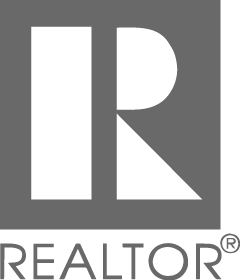Evaluating the return on investment (ROI) for a rental property is crucial for real estate investors looking to maximize profits and minimize risks. At TALK Property Management, we work with real estate investors throughout the Austin area to optimize property performance and streamline operations. Here, we break down three essential metrics that provide a clear picture of a property’s profitability: Cap Rate, Cash-on-Cash Return, and Internal Rate of Return (IRR).
1. Cap Rate (Capitalization Rate)
The Cap Rate is one of the most widely used metrics to evaluate rental properties, as it quickly indicates the potential annual return based on the property’s current value.
How to Calculate Cap Rate: Cap Rate = (Net Operating Income (NOI) / Property Value) x 100
For example: If your property generates $30,000 in annual NOI and is valued at $400,000, the Cap Rate would be 7.5%.
Why It’s Useful: Cap Rate helps investors determine if a property is worth purchasing compared to other properties or alternative investments. In Austin’s competitive market, a higher Cap Rate generally indicates better profitability, but be mindful of market conditions—higher rates could also suggest increased risk.
2. Cash-on-Cash Return
While Cap Rate measures the return based on the property’s value, Cash-on-Cash Return focuses on the actual cash invested, making it particularly useful for investors who’ve used financing.
How to Calculate Cash-on-Cash Return: Cash-on-Cash Return = (Annual Cash Flow / Total Cash Invested) x 100
For example: If you’ve invested $80,000 in down payment and closing costs and your annual cash flow is $8,000, your Cash-on-Cash Return is 10%.
Why It’s Useful: Cash-on-Cash Return provides insight into how well your cash is working for you, especially if you’ve leveraged financing. This metric helps you assess if the property will yield sufficient cash flow, an essential consideration in Austin’s dynamic rental market where prices and cash flow often fluctuate.
3. Internal Rate of Return (IRR)
The Internal Rate of Return (IRR) is a more complex but powerful metric for evaluating long-term property performance, as it considers cash flow over the investment period, including when you sell the property.
How to Calculate IRR: The IRR calculation requires projecting all future cash flows and the anticipated sale price, allowing for more detailed financial modeling. Many investors use financial software or consult with a property management team to accurately determine IRR.
Why It’s Useful: Unlike Cap Rate and Cash-on-Cash Return, IRR reflects the time value of money, making it particularly effective for long-term planning. It helps you measure the property’s overall profitability and compare it with other investments, allowing you to make a well-informed decision about your Austin investment property’s potential.
Choosing the Right Metric for Your Investment Goals
Understanding these metrics is critical, but their effectiveness depends on your investment strategy and financial goals. For Austin investors seeking steady cash flow, Cash-on-Cash Return may be the most relevant, while those focused on long-term growth might prioritize IRR. Cap Rate offers a quick snapshot of annual return but may not capture the whole financial picture.
Leverage Expertise to Maximize ROI
Calculating these metrics accurately requires reliable data and expertise. At TALK Property Management, we specialize in supporting Austin’s real estate investors with hands-on property management, market insights, and personalized strategies. By evaluating ROI effectively, we help our clients make smart, data-backed decisions to grow their portfolios in Austin’s vibrant market.
If you’re ready to dive deeper into your property’s potential or seek guidance on maximizing ROI, our team at TALK Property Management is here to help. Reach out today, and let’s work together to make your Austin investment properties perform at their best!


